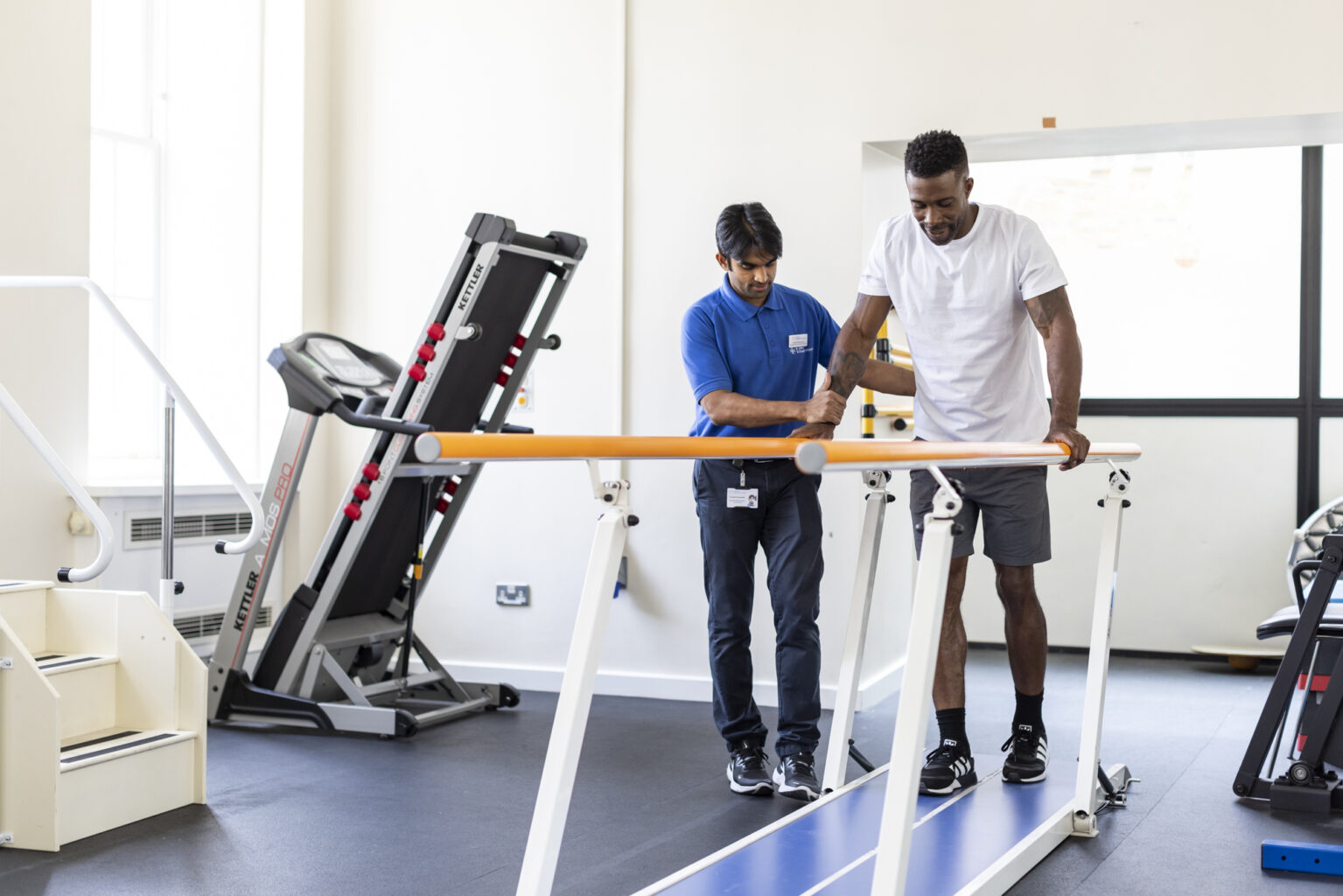Contact number: 020 7806 4060
Occupational Therapy for Stroke Rehab
Occupational therapy (OT) is an essential part of the of the stroke rehabilitation process with the aim of assisting patients to regain functional skills. This is done by the use of a restorative approach or by training patients to use compensatory/adaptive techniques to help them regain skills needed to complete everyday tasks
Our specialist occupational therapists are trained to identify physical, cognitive, perceptual and emotional difficulties, and will create tailored treatment programmes based on individual goals.
Our occupational therapy treatment programme will usually include:
- Assessment and practice of activities of daily living (ADL) Assessment and treatment of the affected Upper limb
- Cognitive screening and rehabilitation
- Home assessment and advice about set up and equipment needs
- Liaison with community teams to arrange equipment, care and rehabilitation for ongoing recovery at home.
What’s involved?
Depending on individual needs, the occupational therapy programme may include:
- Activities of Daily Living (ADL) Training: with the focus on helping patients regain the ability to perform basic daily activities such as dressing, grooming, bathing, and feeding. This may involve teaching adaptive techniques or recommending assistive devices to make these tasks more manageable.
- Upper limb Rehabilitation: Stroke often leads to problems such as: weakness spasticity, impaired sensation, reduced coordination and/or inattention to the affected upper limb. In order to help you manage/improve/ regain function we may use different techniques and modalities . This may include: manual facilitation techniques, therapeutic strengthening exercises and intensive task-specific practice. We may also use electric stimulation when appropriate.
- Functional balance and functional mobility practice to facilitate independence and to enable patients to negotiate their environment and manage basic daily tasks safely.
- Cognitive Rehabilitation: Stroke can affect cognitive functions, including Attention, processing information, memory, problem-solving, and decision-making. Once identified we will help you improve in those areas or to make appropriate adaptations.
- Vision: whether you experience and report visual impairment or if it is identified during our initial screening, we will make a referral for you to be seen by an ophthalmologist. We will also teach you some compensatory techniques to overcome issues such as hemianopia.
- Sensory Re-education: Stroke survivors with sensory deficits, such as altered sensation or numbness, may benefit from sensory re-education techniques to improve their ability to feel and interpret sensory input. Patients experiencing one sided inattention/ neglect will be trained to compensate for those deficits.
- Home assessment and Environmental Modifications: We will assess your home environment and recommend modifications or adaptive equipment to enhance safety and to facilitate safe discharge we often liaise with community services to provide the necessary equipment or we can recommend private retailers.
Your initial assessment
Upon your admission to the ward a joint occupational therapy and physiotherapy assessment will take place. This will include an assessment of your mobility status, balance, coordination and upper limb strength and function. During the initial assessment we will also screen for any visual and cognitive impairments in order to make any further referrals if needed.
An assessment of your ability to carry out basic everyday tasks (ADL) will be completed within 72 hours of your admission. Based on the above we will help you set up realistic goals and tailor a treatment programme to help you achieve those goals.
After therapy
The length of time that you’re in rehabilitation will differ from person to person. Treatment is an individualised experience. However, the current evidence shows that most people will stay within treatment support for around six months before they notice a significant change in their balance, pain, and walking support.
When you are ready to leave the hospital, we will support you every step of the way. We will help arrange any care, therapy and equipment you might need going forward, by referring to your local NHS or private services. Our support doesn’t need to finish when you leave us!
All our therapy services are also available in our outpatient therapy department, and this is of great benefit to those who want to continue their rehabilitation journey.
How to pay for your treatment
If you’re… paying for yourself
Did you know you don’t need private medical insurance to come to St John & St Elizabeth Hospital? As a self-pay patient, you can access safe, outstanding quality health care at times to suit you.
For scans and tests, as well as to see most consultants, you’ll still need to be referred by a medical professional like your GP, but as a self-pay patient, the process is more straightforward. You won’t need authorisation from an insurance provider, and you’ll have greater choice of therapist and appointment times.
If you’re… insured
St John & St Elizabeth Hospital is approved by all major medical insurance companies. If you have a personal private health insurance policy, or your company provide it for you, you can use it to pay for your care from your initial consultation through to treatment, surgery and aftercare such as physiotherapy. Not all private health insurance plans cover the same things. It’s very important to check exactly what you are covered for with your insurance provider.

